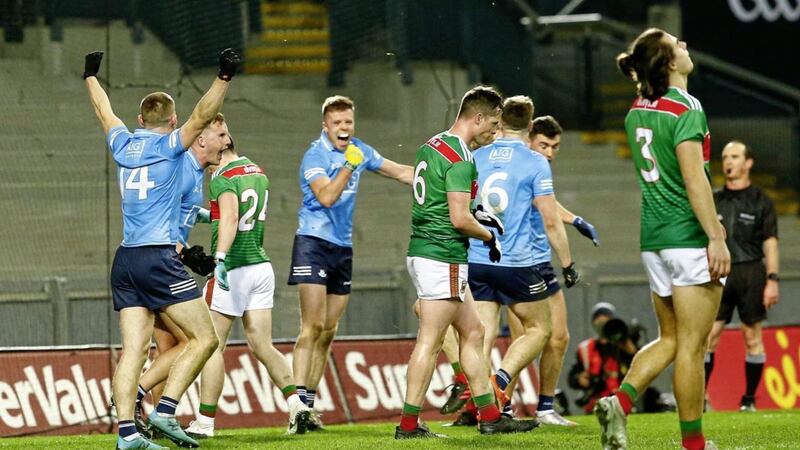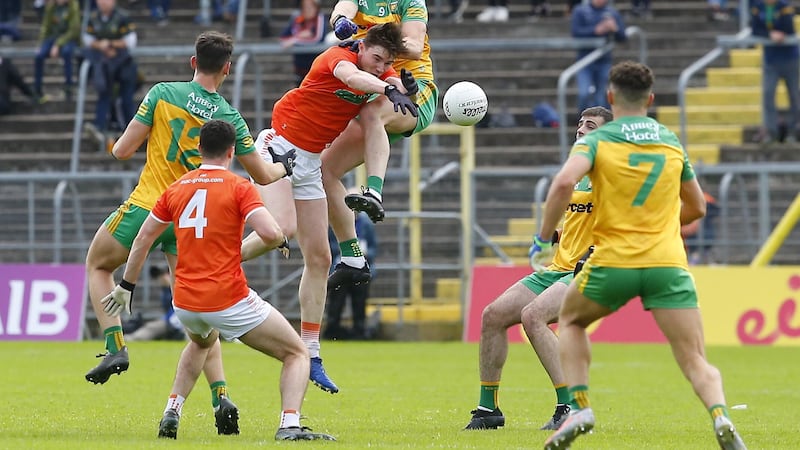ULSTER counties Down, Armagh, Monaghan, Tyrone and Fermanagh were the bottom five in Ireland in terms of Croke Park games development grants received between 2015 and 2019, a new study has found.
The study also reveals that in the same period Dublin's team expenses grants have been among the largest in Ireland despite the county’s relative lack of land mass.
DCU PhD student Conor Murray has analysed the levels of funding given to each county by the GAA in that same five-year period for both games development and team expenses.
While the long-running debate over Dublin’s funding has centred on the games development grant money, Murray’s study found that in terms of funding per square kilometre of the county’s physical size, the capital county was vastly outstripping any of its rivals.
The GAA annually pays counties varying amounts to help cover the cost of running inter-county teams, which are broken down into players’ mileage, players’ nutrition and unspecified ‘team expenses’.
The players’ mileage rate was 65c per mile prior to this year, while a maximum of €1.2m was set aside to cover nutrition.
In terms of land mass, Dublin is the third smallest county in Ireland.
“Conventional wisdom may suggest that larger, less densely populated counties would likely accrue greater mileage expenses,” said Murray.
“However, despite being the third smallest county by land area, Dublin received significantly more in team expenses per square kilometre than any other county between 2015 and 2019.”
Dublin’s total team expenses grant for the five-year period comes to €1.47m, just shy of Galway’s €1.51m, which is the highest overall grant figure.
When the annual €80,000 payment towards the team holiday for All-Ireland winners plus the extra €50,000 from last year’s replay is removed, the Dublin figure drops to €1.04m.
Beaten All-Ireland finalists are given the same €80,000 grant by Croke Park.
Galway (€1.28m), Kerry (€1.26m) and Mayo (€1.12m), all of whom have featured in at least two All-Ireland finals during the time, are the only counties to have received more once the money for team holidays has been removed.
Murray’s study, however, focuses on funding in relation to each county’s size and population density.
It analyses a county’s success against population density and two streams of central funding, before adding a new consideration of team expenses and land area.
He found that Croke Park’s team expenses given to Dublin averaged out at €1,178 per square kilometre, when the payment for team holidays is removed, or €1,612 if the full figure of €1.47m is taken.
The county closest to that figure was Kilkenny, at just €433 per square kilometre, Murray found.
Given that the team expenses funding is given to counties specifically to help fund players’ mileage and nutrition claims, the Dublin players’ relative lack of travel to and from training means their grant figure will add another layer to the debate over how the GAA is distributing its funding.
For example Tipperary, who have been in two All-Ireland hurling finals and a football semi-final during the time period looked at, received €975,052 despite being the sixth largest county in terms of land area and the eighth smallest in terms of population density.
In terms of games development grants from 2015-2019, Down received the least of any county at €517,400.
Their Ulster neighbours Armagh (€524,076), Monaghan (€561,032), Tyrone (€564,000) and Fermanagh (€567,500) were the next four lowest in the table, with only Antrim (€1.1m) in the top eight counties.
With Donegal receiving $595,000 and Cavan (€656,339) it means seven Ulster sides figure in the bottom 12 in Ireland while Derry received €919,000 in games development grants.
Dublin have received €6.9m in the same time, more than 550 per cent more funding for full-time coaches than their nearest rivals Meath, who were granted €1.2m and were along with only Kildare, Cork and Antrim in receiving over €1m.
The distribution of the games development funding has been the central debate in the GAA in recent times, brought once more to the fore by Dublin’s collection of an unprecedented sixth straight All-Ireland football championship.
GAA director general Tom Ryan said in 2017 that there would be a “modest recalibration” of Dublin’s funding, and to date little noticeable change has been made.







